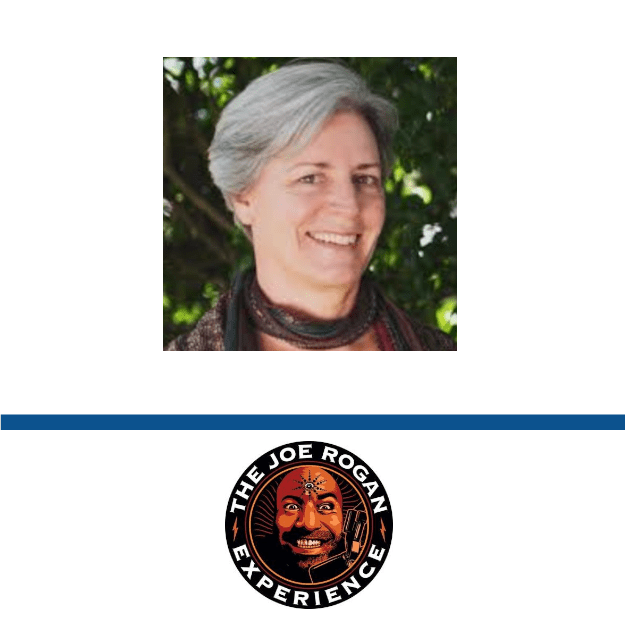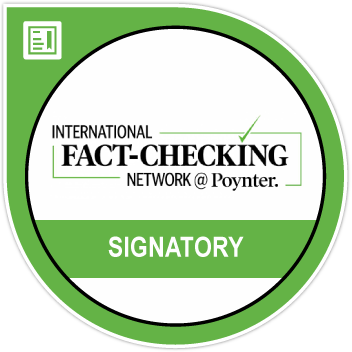
Misleading: The mercury-based preservative thimerosal is no longer used in most vaccines in the U.S., Europe, and the U.K. Studies didn’t find that thimerosal in childhood vaccines is harmful. Trace amounts of DNA may be present in COVID-19 mRNA vaccines due to the manufacturing process, but aren’t harmful.

FULL CLAIM: Polio was renamed to hide its existence and make it seem as if polio vaccine works; no saline-placebo controlled vaccine trials exist that show they are safe; vaccine manufacturers are immune to any legal consequences; mercury in vaccines is harmful; SV40 and DNA contamination in COVID-19 mRNA vaccines are harmful; measles vaccine depletes vitamin A; vitamin C prevents tetanus
REVIEW
On 26 March 2025, podcaster Joe Rogan interviewed physician Suzanne Humphries on his show The Joe Rogan Experience. A video of Humphries’ interview, uploaded to YouTube, received more than 1.6 million views at the time of publication.
Humphries is a nephrologist and anti-vaccine activist who co-authored a book titled “Dissolving Illusions”. The book, published in 2013, purports to “[show] that vaccines, antibiotics, and other medical interventions are not responsible for the increase in lifespan and the decline in mortality from infectious diseases”.
In a Facebook post, Rogan promoted the book to his following of more than 7.6 million users, saying it contained “the real history of vaccines”. Articles from Science-Based Medicine and Vaxopedia have explained in detail why many of the claims in the book are inaccurate or misleading.
This isn’t the first time that Rogan platformed an individual with a record of spreading health misinformation. And Rogan himself has made inaccurate health claims, for example promoting the use of ivermectin as a COVID-19 treatment, even though clinical trials around the world haven’t found evidence that ivermectin is effective against COVID-19.
During the interview, both Rogan and Humphries made several long-debunked claims about infectious diseases and vaccines. This review will address some of these claims and explain why they’re inaccurate or unsubstantiated by evidence.
Claim 1 (Inaccurate):
Rogan: “Do you think it’s the immunity to any legal consequences that has allowed [vaccine manufacturers] to sort of operate like this?”
Humphries: “Well we certainly saw an explosion of their creativity since 1986. Actually in 1986…you’re referring to the National [Childhood] Vaccine Injury Act that was passed in 1986…”
Contrary to Rogan’s claim, the U.S. National Childhood Vaccine Injury Act, passed in 1986, doesn’t render vaccine manufacturers immune “to any legal consequences”. There have in fact been multiple civil lawsuits against vaccine manufacturers, notably filed by Robert F. Kennedy Jr., the current secretary for the U.S. Department of Health and Human Services.
From the website of Health Resources and Services Administration (HRSA):
“Although the Act provides liability protections to vaccine manufacturers and vaccine administrators who administer covered vaccines in many circumstances, these protections are not absolute.” [emphasis added]
The Act established the National Vaccine Injury Compensation Program (VICP), which is “a no-fault route for people injured by vaccines to win damages from a government trust fund financed by an excise tax on vaccines”, explains this article in Science Magazine.
While it doesn’t stop people from suing vaccine manufacturers, it does require that they first seek recourse through the VICP:
“Under the Act, persons with petitions of vaccine-related injuries or deaths resulting from covered vaccines must first exhaust their remedies under the VICP before they can pursue legal actions against vaccine manufacturers or administrators.
To exhaust the remedies available under the VICP and pursue a legal action against a vaccine manufacturer or administrator outside of the VICP, a VICP petitioner must either withdraw his or her petition (if the special master of the U. S. Court of Federal Claims (Court) has failed to issue a decision or the Court has failed to enter judgment within the time provided by the Act) or reject the judgment under the VICP.”
Settlements through the vaccine court have been portrayed as evidence of vaccine harms, but this is misleading, as settlements can be made for several reasons that have nothing to do with vaccine safety. The no-fault nature of the VICP means that being awarded compensation doesn’t prove a vaccine caused an injury. It’s also important to keep in mind that the standards for proving causation in the vaccine court are more lenient compared to civil courts and petitioners are permitted to provide forms of evidence that aren’t allowed in civil courts.
From HRSA:
“Conclusions regarding vaccine safety should not be drawn from the fact that cases were settled. Settlements are one way of quickly resolving a petition.
Settlements are an agreement between the respondent (the U.S. Department of Health and Human Services, represented by the U.S. Department of Justice) and the petitioner (the person who filed the vaccine injury petition).
Settlements are not an admission by the United States or the Secretary of Health and Human Services that the vaccine caused the petitioner’s alleged injuries.
In settled cases, the United States Court of Federal Claims does not determine that the vaccine caused the injury.”
Claim 2 (Inaccurate):
Humphries: “The vaccine trials have always been a bit of a joke […] There’s no saline placebo because the few studies that exist with saline placebos show how bad the vaccine actually is.”
Humphries’ claim that saline placebo-controlled trials of vaccines have only shown vaccines to be “bad” is inaccurate. In an earlier review, Science Feedback explained that there have been numerous vaccine trials conducted with saline placebos. Such trials have been conducted for several vaccines, including the vaccines against measles[1], polio[2], flu[3,4], pneumococcus[5,6], and the human papillomavirus[7,8], which were subsequently approved.
But there are circumstances in which using a saline placebo isn’t practical or ethical to do.
For example, common side effects of vaccination, like fever, headache, and soreness at the injection site, aren’t produced when a saline placebo is given. This makes it more difficult to maintain blinding during the trial—a measure in which the control group and treatment group are concealed from the participants and/or the researchers—which could affect the objectivity of the trial.
In addition, using a saline placebo during a trial leaves a group of people unprotected from a potentially serious disease. This is considered acceptable when no intervention against the disease is available. This was the approach taken in the 1954 polio vaccine field trial, when no other vaccine against polio was available.
However, using a saline placebo when an intervention does exist is considered unethical. In such cases, researchers use the existing version of a vaccine—which was shown to be safe when it was trialed—as the control group against a newer version of the vaccine. This was the case for Prevnar-13, which was compared to its predecessor Prevnar-7[9]. Both are vaccines against the bacterium Streptococcus pneumoniae.
Apart from ethical concerns, the type of placebo used also affects the kind of questions that researchers can answer with a clinical trial.
Testing a vaccine against a saline placebo tells us whether the vaccine works better than nothing, but doesn’t tell us if it works better than an existing intervention. Hence testing a new vaccine against an existing vaccine has the added benefit of enabling researchers to establish whether the new vaccine works better than the existing one.
Claim 3 (Incorrect):
Humphries: “What the facts line up to show you is that polio is still here […] is called different things today, whereas back in the 1940s, 1950s, the criteria for diagnosing polio were completely different to the year that the vaccine was introduced”
Anti-vaccine activists have sought to undermine the polio vaccine’s role in polio eradication by claiming that polio has been renamed to hide its existence. Humphries made such claims in her book “Dissolving Illusions”, which is dissected in greater detail in this article from Science-Based Medicine. Science Feedback also refuted a similar claim based on polio cases in India in an earlier review.
While the diagnostic criteria for paralytic polio did change in 1955, writes pediatrician Vincent Iannelli, Humphries’ claim that the decline in cases is due to this change is inconsistent with epidemiological evidence.
Pointing to reported cases of paralytic polio in the U.S. between 1950 and 1965, Iannelli showed that paralytic cases sharply declined in 1956 (7,911 reported cases) after the introduction of the inactivated polio vaccine, followed by another sharp decline in 1961 (988 reported cases) after the introduction of the oral polio vaccine. Cases continued to decline year on year. By 1965, there were fewer than a hundred cases.
If, as Humphries asserted, the 1955 change in diagnostic criteria was responsible for the fall in cases in 1956, then paralytic polio cases shouldn’t have continued to decline after 1956, but instead stayed at the same level.
After all, if the vaccine was ineffective as she claimed, then poliovirus would still continue to circulate and infect children. The 1955 change in diagnostic criteria would change the number of paralytic polio cases detected as such, but it wouldn’t conceal paralytic polio cases to the point where they disappeared.
Therefore, the most likely explanation for the decline in paralytic polio is that the polio vaccine had reduced the spread of the disease—in other words, the polio vaccine had proved to be effective, contrary to Humphries’ claim.
Virologist Ian Mackay also refuted claims that polio has simply been renamed to hide its existence, stating that “Polio is only polio if poliovirus can be detected (and a lot of work goes into seeking it)”. Indeed, Humphries herself stated that suspected polio cases are tested for polio.
In short, suspected polio cases that test negative for poliovirus aren’t considered polio because the case isn’t caused by polio—and not because polio has been renamed as something else.
Claim 4 (Misleading):
Rogan: “Mercury’s a crazy one though. Haven’t they known that’s poison forever?”
Humphries: “[T]he reason that it’s put into […] the MMR vaccines and some of the flu vaccines is because it’s an antimicrobial, it’ll kill everything”
Both Rogan and Humphries referred to thimerosal (also called thiomersal), a mercury-containing compound used in some vaccines, implying that vaccines are poisoning children.
Claims that thimerosal is responsible for autism have been popular among those opposing vaccination. However, studies have found no association between thimerosal-containing vaccines and autism in children[10-12].
Readers should be aware that since the 2000s, thimerosal is no longer an ingredient in most childhood vaccines in the U.S., the European Union, as well as the U.K., though it can still be found in certain multidose flu vaccines.
Experts recommended removing thimerosal from vaccines as part of a precautionary effort to reduce overall infant exposure to mercury, rather than any positive evidence of thimerosal’s harm. But this change alarmed parents; some interpreted this move as proof positive that thimerosal was harmful, further buttressing vaccine skepticism.
An earlier Science Feedback review explained that it’s important to distinguish between different forms of mercury, as they have different safety profiles.
Methylmercury, which can be found in fish and seafood for example, is a potent neurotoxin that can accumulate in the body. It’s known to negatively affect the development of the nervous system and brain in the fetus and very young children. These effects were evident in the aftermath of the Minamata Bay disaster in Japan and the poison grain disaster in Iraq.
However, ethylmercury, which is the main ingredient of thimerosal, is processed differently by the body. Compared to methylmercury, ethylmercury is broken down and excreted more quickly than methylmercury, so it’s less likely to accumulate in the body.
Claim 5 (Inaccurate and Unsupported):
Humphries: “there’s SV40 in it, there was a staphylococcal endotoxin gene, there were two snake genes in there”
Here Humphries referenced an earlier claim surrounding harmful DNA contamination in COVID-19 mRNA vaccines, based on a preprint from April 2023. In an earlier review, Science Feedback explained that while there can be trace amounts of DNA in the COVID-19 mRNA vaccines due to the manufacturing process, there’s no evidence that the quantity of DNA in the vaccines poses a safety concern.
Nor are claims that such DNA integrates into the DNA of vaccinated people substantiated by scientific evidence. Our bodies already encounter large quantities of foreign DNA on a daily basis: from our food and water, from our environment, and from other people. If simply the presence of foreign DNA was sufficient to trigger integration, then we would already experience effects of this from our daily lives.
But we don’t. As the Vaccine Education Center at the Children’s Hospital of Philadelphia pointed out, if DNA integration was as easy to achieve as these claims made it out to be, then gene therapy—a form of medical treatment that involves altering a person’s genes—would be a lot easier to accomplish than it actually is.
Humphries’ claim that SV40, or simian virus 40, is present in COVID-19 mRNA vaccines is incorrect. Viruses aren’t among ingredients in the mRNA vaccines. But her claim is likely related to the same preprint mentioned earlier, which reported finding the “SV40 promoter” in vials of COVID-19 mRNA vaccines.
For context, the virus SV40 was previously detected as a contaminant in polio vaccines between the 1950s and 1960s. Some studies reported that it caused cancer in some animals like hamsters[13,14], creating concern that the SV40 contamination might have increased cancer risk in those who’d received the polio vaccine at that time.
In an earlier review, we reported that later epidemiological studies didn’t find an increased cancer risk in people who’d received the SV40-contaminated polio vaccine compared to people who didn’t receive the same vaccine. These findings contradict claims that SV40 causes cancer in humans.
The basis for Humphries’ claim that the vaccines contain “two snake genes” and a “staphylococcal endotoxin gene” is unclear. However, the claim may be linked in part to an earlier claim by chiropractor Bryan Ardis that COVID-19 mRNA vaccines contain snake venom. In an earlier review, we explained that Ardis’ claims about snake venom in the vaccines are baseless.
Some studies have reported finding that a portion of the SARS-CoV-2 spike protein resembles certain proteins produced by bacteria, such as toxins from staphylococcal bacteria[15,16]. Such similarities (also called homology) are commonly observed in nature across different species.
These research findings may have implications for treating COVID-19 and its complications. However, they didn’t study the vaccines nor did they provide evidence that COVID-19 mRNA vaccines are harmful, as Humphries seemed to imply.
Claim 6 (Unsupported):
Rogan: “I think this was really important when you were talking about the measles vaccine, you were saying that either if you get an infection with measles, just a natural infection or if you get the vaccine, you’re still going to get depleted of vitamin A. Like, if you get vaccinated for the measles, you should be taking vitamin A as well, your body’s going to get depleted just by getting that shot.”
It’s true that measles infection can reduce vitamin A levels in children. Vitamin A deficiency can also increase the risk of worse outcomes from measles infection. This is why vitamin A supplementation is among the treatments given to children with measles.
However, there’s no evidence showing that the measles vaccine, typically given as the MMR combination vaccine, depletes vitamin A, and Rogan didn’t provide any evidence for his assertion that measles infection and measles vaccination are equivalent in this regard.
Claim 7 (Unsupported):
Humphries: “Rabbit studies have shown that if you give vitamin C, if you have a good high vitamin C level […] you can prevent the tetanus from happening”
Humphries’ claim is reminiscent of the claim that vitamin A can prevent measles, which made the rounds on social media recently in the wake of the Texas measles outbreak. In an earlier review, we explained that the evidence doesn’t support this claim. While adequate nutrition is important for health, vaccination remains the only proven way to prevent measles.
Tetanus is an infectious disease caused by the spores of the bacterium Clostridium tetani. The spores are ubiquitous in the environment, and infection is commonly caused by a wound that comes into contact with spores, for example in the soil or in animal manure, or contaminated objects like a rusty nail. Upon entering the human body, C. tetani begins to grow from the spores and produce a toxin. This toxin is responsible for the symptoms of tetanus.
Unlike many infectious diseases, getting tetanus doesn’t lead to lifelong immunity. This is because only a very small amount of tetanus toxin is needed to cause disease, and this amount of toxin isn’t enough to trigger a long-lasting immune response. The only proven way of preventing tetanus is through vaccination.
We weren’t able to find the rabbit studies that Humphries referenced, but we did find a Cochrane Review of studies from 2013 that examined whether vitamin C could prevent or treat tetanus[17]. The review didn’t mention rabbit studies, but did mention a study in rats where “vitamin C protected against the purified tetanus toxin”.
As for clinical trials in humans, the review found just one non-blinded and non-randomized trial in Bangladesh that found a 45% reduction in case fatality rate in patients aged 13 to 30 who were given vitamin C.
However, the review urged caution due to concerns about the trial’s quality, adding “vitamin C cannot be recommended as a treatment for tetanus on the basis of this evidence”. “Further investigation,” wrote the authors, would be needed to better understand if vitamin C helps treat tetanus.
The review didn’t find studies about using vitamin C to prevent tetanus.
We reached out to the Joe Rogan Experience podcast for comment, but our attempts to reach the outlet were unsuccessful.
Conclusion
The Joe Rogan interview with Suzanne Humphries promotes numerous inaccurate, already-debunked claims about vaccines and infectious diseases.
Randomized clinical trials, including those with saline placebo controls, have shown that approved vaccines are safe and effective at preventing disease. Vaccines have been critical to eradicating infectious diseases around the world, including polio. But no medical intervention exists that carries zero risk, including vaccines. The National Childhood Vaccine Injury Act created a way for people with alleged vaccine injury to seek compensation. While it provides some protection to vaccine manufacturers, it doesn’t give manufacturers complete legal immunity.
Claims that mercury, SV40, and DNA contamination in vaccines cause harm are popular in anti-vaccine circles, but are highly misleading. Thimerosal, a mercury-based preservative, hasn’t been a vaccine ingredient for more than two decades in the U.S., much of Europe, and the U.K. Studies also didn’t find that the amount of thimerosal in childhood vaccines had caused harm. There’s no SV40 virus in COVID-19 mRNA vaccines. While these vaccines may contain trace amounts of DNA due to the manufacturing process, there’s no indication that this is harmful either.
UPDATE (25 April 2025):
We updated our review to indicate that our attempts to reach Rogan for comment were unsuccessful.
REFERENCES
- 1 – Miller et al. (1967) Edmonston B and a further attenuated measles vaccine–a placebo controlled double blind comparison. American Journal of Public Health and the Nation’s Health.
- 2 – Francis et al. (1955) An evaluation of the 1954 poliomyelitis vaccine trials. American Journal of Public Health and the Nation’s Health.
- 3 – Neuzil et al. (2001) Efficacy of inactivated and cold-adapted vaccines against influenza A infection, 1985 to 1990: the pediatric experience. The Pediatric Infectious Disease Journal.
- 4 – Neto et al. (2009) Efficacy and Safety of 1 and 2 Doses of Live Attenuated Influenza Vaccine in Vaccine-Naive Children. The Pediatric Infectious Disease Journal.
- 5 – Dagan et al. (1997) Safety and immunogenicity of tetravalent pneumococcal vaccines containing 6B, 14, 19F and 23F polysaccharides conjugated to either tetanus toxoid or diphtheria toxoid in young infants and their boosterability by native polysaccharide antigens. The Pediatric Infectious Disease Journal.
- 6 – Lucero et al. (2009) Efficacy of an 11-valent pneumococcal conjugate vaccine against radiologically confirmed pneumonia among children less than 2 years of age in the Philippines: a randomized, double-blind, placebo-controlled trial. The Pediatric Infectious Disease Journal.
- 7 – Garland et al. (2015) Safety and immunogenicity of a 9-valent HPV vaccine in females 12-26 years of age who previously received the quadrivalent HPV vaccine. Vaccine.
- 8 – Reisinger et al. (2007) Safety and Persistent Immunogenicity of a Quadrivalent Human Papillomavirus Types 6, 11, 16, 18 L1 Virus-Like Particle Vaccine in Preadolescents and Adolescents: A Randomized Controlled Trial. The Pediatric Infectious Disease Journal.
- 9 – O’Brien et al. (2003) Efficacy and safety of seven-valent conjugate pneumococcal vaccine in American Indian children: group randomised trial. The Lancet.
- 10 – Hviid et al. (2019) Measles, Mumps, Rubella Vaccination and Autism: A Nationwide Cohort Study. Annals of Internal Medicine.
- 11 – Jain et al. (2015) Autism Occurrence by MMR Vaccine Status Among US Children With Older Siblings With and Without Autism. JAMA.
- 12 – Taylor et al. (2014) Vaccines are not associated with autism: An evidence-based meta-analysis of case-control and cohort studies. Vaccine.
- 13 – Girardi et al. (1962) Development of Tumors in Hamsters Inoculated in the Neonatal Period with Vacuolating Virus, SV40. Experimental Biology and Medicine.
- 14 – Cicala et al. (1993) SV40 induces mesotheliomas in hamsters. American Journal of Pathology.
- 15 – Cheng et al. (2021) A monoclonal antibody against staphylococcal enterotoxin B superantigen inhibits SARS-CoV-2 entry in vitro. Structure.
- 16 – Tu et al. (2025) The identification of a SARs-CoV2 S2 protein derived peptide with super-antigen-like stimulatory properties on T-cells. Communications Biology.
- 17 – Hemilä and Koivula. (2013) Vitamin C for preventing and treating tetanus. Cochrane Database of Systematic Reviews.


